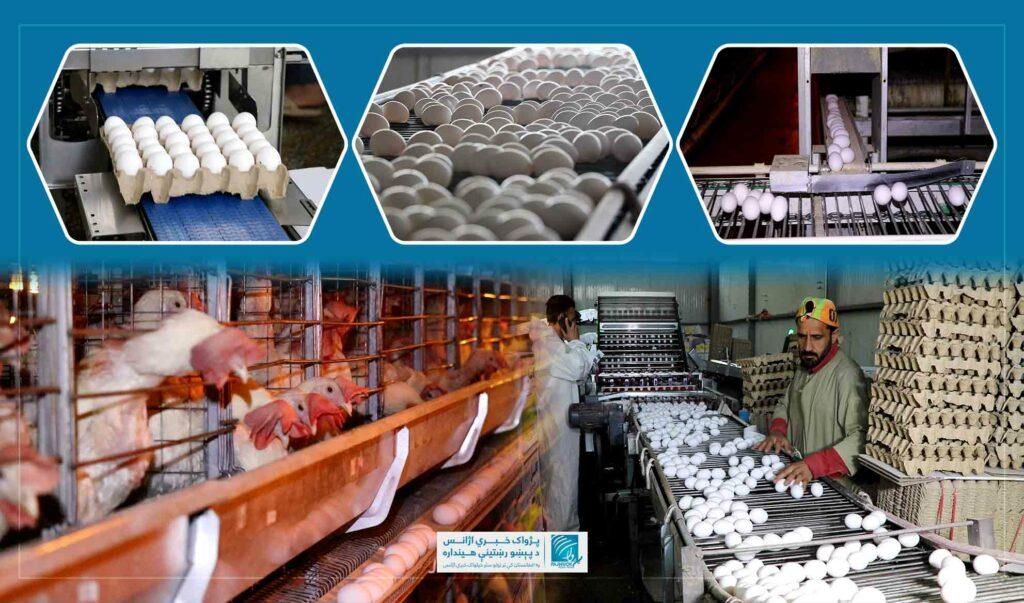KABUL (Pajhwok): Around 600 laying hen farms have a daily production of one million eggs at the moment which has met more than half of the needs of the domestic market.
Ansarullah Bakhtyni head of the Afghanistan Poultry Association, told Pajhwok Afghan News that 811 hen farms in different provinces of the country were registered with them. These farms were situated in Kabul, Nangarhar, Herat and Balkh provinces.
He said $200 million had been invested on the current hen farms while 20,000 people had been directly employed.
Bakhtyani said local market needed up to three million eggs daily and only 1.5 million eggs were supplied from the local market, adding that up to 65 percent of the local demand was met by the domestic hen farms.
He also said about the quality of eggs, the quality of eggs produced in domestic farms is higher than imported eggs because the composition of domestic farm chicken feed includes plant material, which is a guarantee of quality.
Bakhtyani also says that domestic farm eggs are delivered fresh and on time to the market, while imported eggs arrive in Afghanistan with a delay of up to a month.
Referring to chicken feed he said now chick feed was produced inside the country, Afghanistan has become self-sufficient in this field, and according to him, some factories exported chick feed to Turkmenistan and Tajikistan last year.
He termed the chicken feed produced in the country very good in terms of quality and said that now there were more than 40 chicken feed production factories in the country, of which 25 are active and 15 are inactive.
According to him, active factories meet the needs of farms in Afghanistan in terms of chicken feed, and up to $400 million had been invested in these factories.
Hakim Jan Ibrahimkhel, a hen farm owner, said he has a hen farm in Kabul from the past 15 years in which he kept 20,000 laying hen.
He said $300,000 he had invested on this hen farm in which up to 16,000 eggs were daily produced.
He said currently the market situation in Kabul had improved and said still eggs were smuggled into Afghanistan from neighboring countries.
He asked the government to stop the import of low quality eggs and support local hen farm owners.
Khalid, another hen farm owner, said he has a hen farm in Kabul from the past six years and incepted this business by investing $50,000.
He said electricity shortage, standard location and the shortage of professional workers was some of the problems from which they suffered.
He asked the government to address these problems.
Agriculture Ministry
Misbahuddin Mustaeen, spokesperson for the Ministry of Agriculture and Livestock, said currently around 600 laying farms existed nationwide and it produced up to 1.5 million eggs daily.
He said local market demand stood above 1.5 million and the required quantity was imported from the outside.
He said in coordination with the private sector, the level of eggs production in the country was high and Afghanistan was free from dependency on foreign countries in this regard.
Mostaeen said millions of dollars had been invested in hen farming where thousands of individuals have been provided with work opportunity.
He said the Ministry of Agriculture paved the way for the promotion of hen farming by providing technical and professional advice, chicken feed quality control and through the provision of Islamic services with the cooperation of Agricultural Development Fund.
Currently, Afghanistan imported eggs from Iran, Pakistan, Kazakistan, Uzbekistan, Turkiye and India.
nh








GET IN TOUCH
NEWSLETTER
SUGGEST A STORY
PAJHWOK MOBILE APP